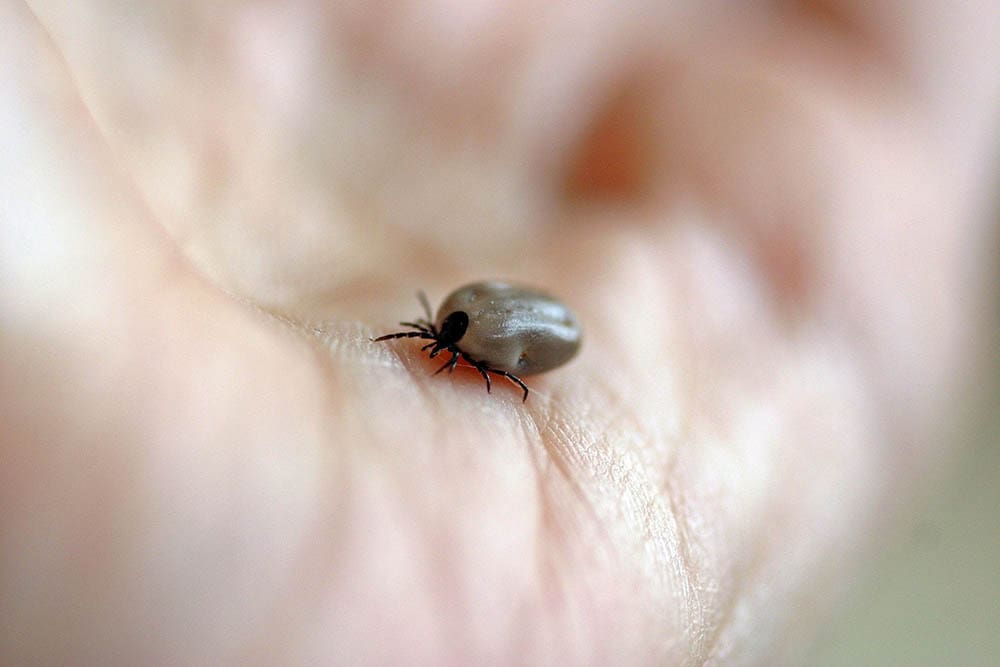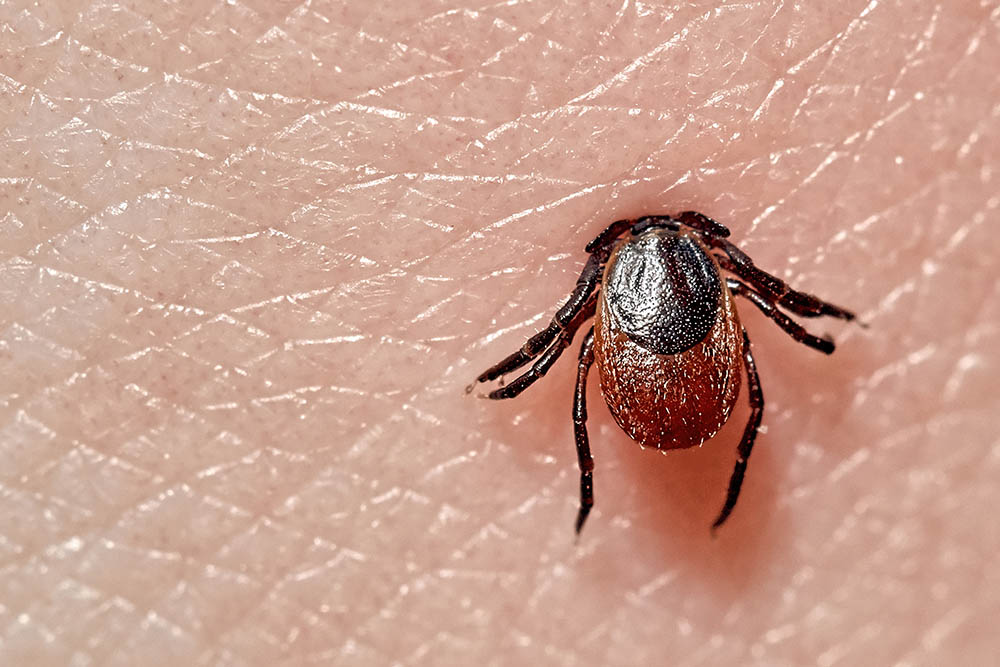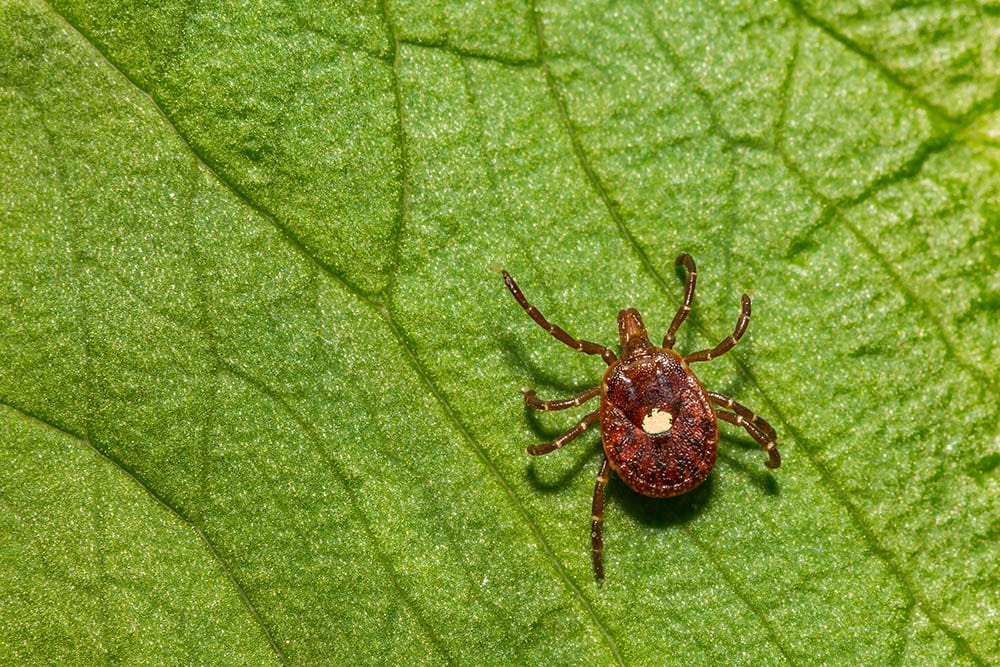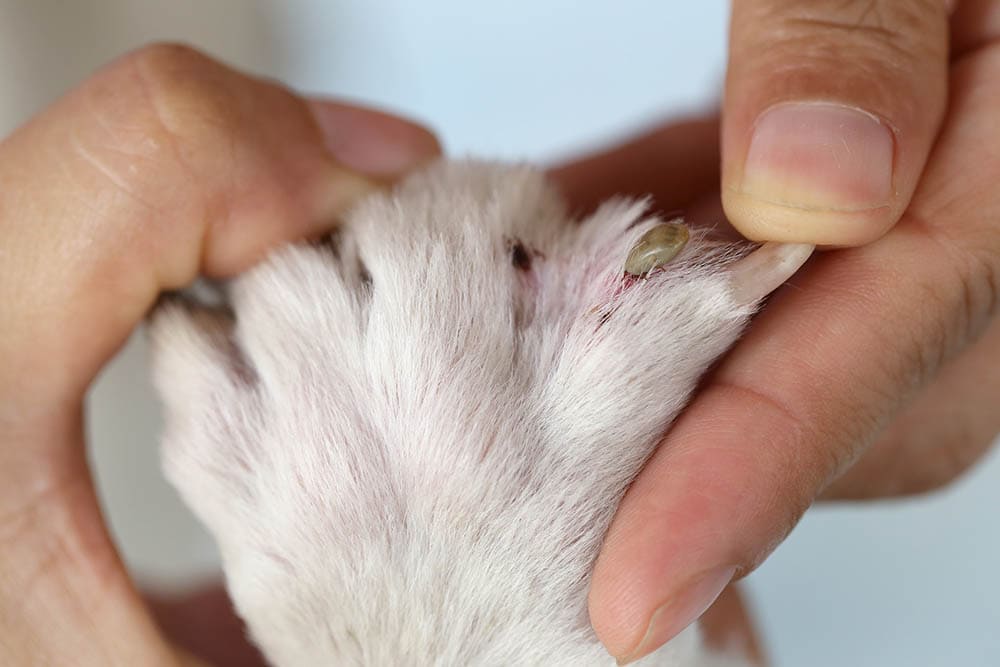5 Types of Ticks in Alabama (With Pictures)
-
Savanna Stanfield
- Last updated:

Ticks can be quite the nuisance. They can get on our clothes and pets and bite us, transmitting diseases such as Lyme disease that can make us very sick. That’s not to mention what these little buggers can do to deer and other animals.
Due to the pastures as well as heavily forested areas that can be found all over Alabama, it also means that there are, unfortunately, multiple tick species that can be found in the state. In this article, we’ll take a closer look at these tick species so that you know what to look for and how to avoid them.

The 5 Types of Ticks in Alabama
1. American Dog Tick

| Scientific Name: | Dermacentor variabilis |
| Size: | ¼ inch |
| Most Active: | April to September |
The American dog tick is a common and abundant tick species in Alabama as well as most states east of the Rocky Mountains. They can be found in both forested areas and grasslands, meaning that you can find these ticks pretty much anywhere in Alabama, regardless of where you live. These types of ticks are also one of the most common that you’ll find on pets and yourself.
American dog ticks are one of the primary carriers of Rocky Mountain spotted fever, so it’s very important that you take precautions when working or walking outside. Check yourself, but especially your pets for these ticks regularly. You can identify them by their reddish-brown color and a large white shield ( called a scutum) on their back. These ticks are around ¼ inch in size normally, but can be ½ inch or larger when engorged.
2. Blacklegged Tick (Deer Tick)

| Scientific Name: | Ixodes scapularis |
| Size: | < ⅛ inch |
| Most Active: | Year-round |
The blacklegged tick, also known as the blacklegged deer tick or simply the deer tick, is one of the most common tick species found in the state of Alabama as well as the United States as a whole. As the name implies, they are the type of tick that you’ll most likely find on deer. These ticks can be devastating to deer populations, and fawns with heavy tick infestations may even have a mortality rate of up to 30%.
But, don’t let this fool you. Blacklegged ticks don’t feed exclusively on deer blood, nor is it the only tick species you’ll find on deer. They will also attach themselves to humans and pets. You can identify them by their reddish-brown body. These ticks start out at less than ⅛ inch but can swell to as big as ½ inch when filled with blood.
3. Brown Dog Tick

| Scientific Name: | Rhipicephalus sanguineus |
| Size: | ⅛-¼ inch |
| Most Active: | Year-round |
The brown dog tick, also known as the kennel tick, can be found throughout Alabama and pretty much any other state in the contiguous United States. You’re likely to spot this tick in animal pens and kennels if you keep your dog in a pen. But, they can also infest homes and can live their entire lives indoors. You don’t want these ticks in your home because they can cause infestations that can be hard to get rid of.
Brown dog ticks prefer to feed on dog blood but will also feed on humans, cats, and other mammals. Like other ticks, they can carry diseases. Brown dog ticks can be hard to distinguish from other ticks because other than being reddish-brown in color, they don’t have any other distinguishing features. But, they are generally smaller than American dog ticks and larger than blacklegged ticks in their normal size. Like other ticks, they can grow to ½ inch while feeding.
4. Gulf Coast Tick
| Scientific Name: | Amblyomma maculatum |
| Size: | < ⅛ to ¼ inch |
| Most Active: | December to August |
The Gulf Coast tick is primarily found in coastal regions of South Alabama as well as other locations along the Gulf Coast. This small tick prefers to attach to larger animals such as livestock, coyotes, and deer but may attach to humans and pets as well. The primary disease that these ticks carry is Rickettsia parkeri, which is a type of spotted fever.
Like other ticks, Gulf Coast ticks are reddish-brown in color. But, they are easier to distinguish from other tick species because they have a silvery white scutum with three vertical stripes running through it. They range in size from less than ⅛ of an inch to ¼ inch, but can grow as large as ½ inch when feeding.
5. Lone Star Tick

| Scientific Name: | Amblyomma americanum |
| Size: | ⅛ inch |
| Most Active: | March to October |
The Lone Star tick is the final tick species that you’re likely to find in Alabama, as well as other states in the south, Midwest, and along the east coast. They are the most abundant tick species that you’ll find in Alabama as well. Although Lone Star ticks aren’t known to carry Lyme disease, one of the most common tick-borne illnesses, they are thought to carry a host of other diseases.
Lone Star ticks are found mostly in wooded areas. They feed mostly on deer, cattle, dogs, and other domestic animals but humans are commonly bitten as well. Lone Star ticks can be distinguished by their reddish-brown color with a white spot in the middle of their backs. Adults are usually around ⅛ inch in length but can grow to ½ inch when engorged.

When and Where Can You Find Ticks in Alabama?
Each tick species in Alabama is most active at different times, with American dog ticks and brown dog ticks being active year-round. However, you’re most likely to encounter all species of ticks in Alabama during the spring and summer months. Ticks lay eggs in the spring, which hatch and grow into adult ticks throughout the rest of the year.
- Tall grasses
- Shrubs
- Leaf litter
- Rotten wood
- Wooded areas
- Beaches
- Moist areas
Likewise, if you have pets that spend a lot of time outside, you may encounter ticks in your home and on your furniture, as well as in animal pens.

What Illnesses and Diseases Can Ticks Carry?
There are a host of diseases that ticks can carry and transmit to both humans and to pets and other animals that they feed off of. There are a couple of diseases that are most commonly transmitted, so we’ll look at those in more detail and then provide some additional illnesses ticks can transmit.
Spotted Fever
Spotted fever is the most commonly transmitted disease by ticks and the most reported tick-borne illness in Alabama. There are different varieties of spotted fever including Rocky Mountain spotted fever, Pacific spotted fever, and Rickettsialpox, but all of them are caused by Rickettsia bacteria. Rocky Mountain spotted fever is the most common and the most serious.
- Fever
- Vomiting
- Muscle aches
- Abdominal pain
- Headache
- Lack of appetite
- Spotted red rash
These symptoms can start anywhere from a few days up to 2 weeks after being bitten by a tick. This condition is treatable with antibiotics but can be hard to diagnose if a rash is not present and can cause lifelong complications and can even be life-threatening if not treated quickly.
Lyme Disease
Lyme disease is one of the most commonly reported tick-borne illnesses across the United States with over 300,000 cases reported each year. There has also been an increase in the number of Lyme disease cases in the Southeast United States, which includes Alabama. The specific cause of Lyme disease is Borrelia bacteria, but the disease is primarily transmitted through blacklegged (deer) ticks.
As with spotted fever, symptoms of Lyme disease may appear a few days or even a few weeks after being bitten by a tick.
- Fever
- Headache
- Stiff neck
- Fatigue
- Swollen lymph nodes
- Mental fogginess
- Muscle and joint pain
A telltale sign of Lyme disease is a large red rash on the skin that may resemble a bull’s-eye. It can be treated with antibiotics and usually has a quick recovery if you catch it early enough. If you don’t catch it quickly, it may result in serious complications. Lyme disease can affect dogs as well as humans.

Other Tick-Borne Illnesses
These diseases may be transmitted through one or multiple species of ticks. Many of them can affect both humans and pets or other animals.

Where Do Ticks Commonly Attach to the Body?
- Hair/scalp/around ears
- Under waistbands/bra straps
- Inside the belly button
- Behind knees
- Around ankles
- Between fingers and toes
- Other moist or dark places
If you spend a lot of time outdoors, either for work or leisure, it’s very important that you check yourself for ticks afterward. If your pets spend a lot of time outdoors, check them as well. Ticks may attach themselves anywhere on a dog’s or cat’s body, but particularly near their ears, armpits, belly, and tail.
What to Do If You Find a Tick on You or Your Pet
If you do find a tick on you or your pet, it’s very important that you remove it properly. You don’t want to leave any part of the tick on your body or your pet’s body, and you want to make sure that the head gets completely removed from the skin in order to prevent disease transmission.
Use tweezers to grab the tick as close to the skin as possible and pull upward. Clean the area with a disinfectant. You can kill the tick by submerging it in rubbing alcohol for at least 24 hours or flushing it down the toilet.
It’s not necessary to seek medical attention just from being bitten by a tick. But, watch the area and monitor yourself or your pet for signs of disease or infection. Remember that some tick-borne illnesses can take up to a couple of weeks to present themselves. If you do start to notice any symptoms, seek medical attention as soon as possible.

How to Prevent Ticks from Getting on You
If you do spend a lot of time outside, it’s best if you can prevent ticks from getting on you in the first place.
- Wear long, light-colored clothing
- Tie up long hair/wear a hat
- Wear close-toed shoes
- Use insect repellent
- Stay on trails
- Don’t sit on logs/stumps
- Check clothing afterward
- Tumble dry clothing for ½ hour using high heat
- Check your body thoroughly afterward
It’s very important that you protect your pets from tick encounters and bites as well after being outside. You can run a brush or lint roller through your pet’s coat to pick up ticks that haven’t attached themselves yet.
But the best thing you can do for your pets is talk to a veterinarian about tick prevention methods. These can come in the form of oral or topical medication or collars that have tick repellent properties. Many of these methods are also effective against fleas and mosquitoes, which can also carry diseases and parasites that can infect your pet.

Conclusion
So there you have it! There are five tick species that can be found in Alabama. Ticks can carry diseases that can infect you, your pets, your livestock, and other animals. To protect you and your pets, it’s important to take precautions when outside and to check yourself when coming back inside. Hopefully, this article helped you to be able to identify the common tick species found in Alabama and learn what to do to avoid them.
Featured Image Credit: Catkin, Pixabay
Contents
